The majority of NCEs in the pharmaceutical industry’s development pipeline exhibits poor solubility in aqueous media which generally results in low bioavailability upon oral administration. This exerts a significant impact on the process of preclinical and clinical development and commercialization, and requires sophisticated solutions. Therefore, the majority of efforts are directed towards developing drug delivery systems to increase the solubility of the poorly soluble drugs and bioavailability in vivo.
Smart formulations for poorly soluble drugs are often the key to successful development, in many cases sophisticated drug formulations are even a prerequisite to tackle a certain indications. Regarding drug life cycle management innovative formulations might even open up new possibilities e.g. generation of new IP.
RD&C can provide expertise on different approaches:
ORAL ROUTE OF ADMINISTRATION
Solid dispersions
Solid dispersion is defined as the system where drug is dispersed in an amorphous polymer matrix in order to molecularly dispersed form of drug. Two methods commonly used to prepare solid dispersion are spray drying and Hot Melt Extrusion (HME)
Nanosuspensions
In nanosuspension systems, the drug is subjected to mechanical attrition in order to obtain submicron colloidal dispersion of drug particles. It consists of poorly water-soluble drug suspended in dispersion (made of polymers and stabilizers). Nanosuspension based formulations improve dissolution rates of poorly soluble drugs, along with improvements on the pharmacokinetics of the drug (e.g long acting parenterals)
Mesoporous silica particles
Mesoporous silica particles have typical diameter in the range of of 50-250 µm and a narrow particle size distribution. The structure and morphology of these particles can be controlled at nano to micro scale and enables to generate high surface area and pore volume allowing huge drug loading e.g 40-50%.
The entrapment of drugs in the mesopores leads to conversion of crystalline drug into the amorphous form, and therefore this technology offers a viable alternative to solid dispersion systems.
Lipid based systems
Poorly soluble drugs can be efficiently delivered using lipid based drug delivery systems. Encapsulation or solubilization of the hydrophobic drug in the lipid excipients leads to higher solubility and absorption which leads to higher bioavailability.
Self emulsifying systems
These kind of systems show the ability to emulsify a drug substance due to the presence of surfactants along with an oily phase. The hydrophobic drug is solubilized in the oil phase, the role of one or more surfactants is then to disperse the oil phase in the GI tract, which results in the formation of a micro-emulsion.
These systems may be classified as self-micro emulsifying drug delivery systems (SMEDDs) or self-nanoemulsifying drug delivery systems (SNEDDs) depending upon the size of the emulsion particles. These formulations are made of oil, surfactant, co-surfactant and co-solvent.
PARENTERAL ROUTE OF ADMINISTRATION
The RD&C team can support with the development of complex i.v. formulations including lyophilisation for reconstitution, concentrates and frozen solution, etc. to achieve desired solubility, stability and physiological parameters such as pH, viscosity, osmolality.
TOPICAL ROUTE OF ADMINISTRATION
The RD&C team has strong experience in developing topical formulations such as hydro-alcoholic gels, creams and ointments for topical and systemic delivery, and are equipped to provide a guide to develop a transdermal patch based formulation.
LIFE CYCLE MANAGEMENT
Based on our knowledge of oral, topical and parenteral formulations we can offer a support for drug life cycle management including reformulation of existing formulations, develop strategies for innovative formulation including the evaluation of any solid phase opportunities with the possibility to create novel intellectual property.
ANALYTICAL DEVELOPMENT AND VALIDATION
The RD&C team can offer support with development and validation of analytical methods for pharmaceutical development as required per ICH guidelines for drug and drug products.


